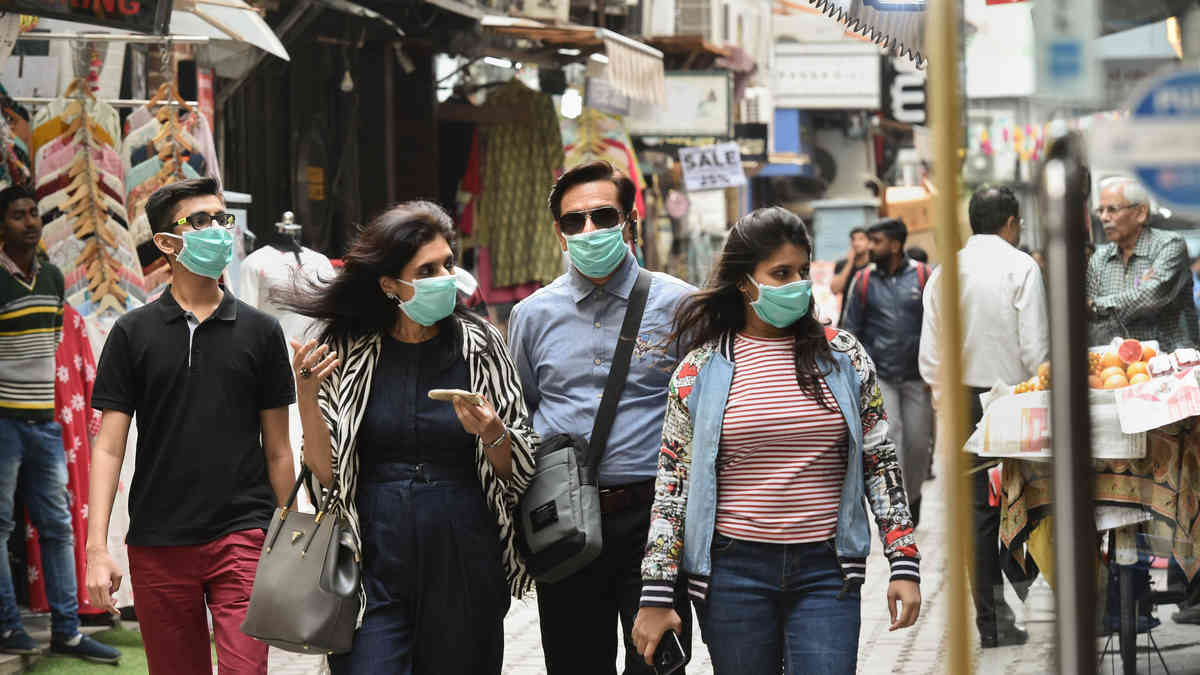The number of coronavirus cases crossed the one lakh mark in the country on Tuesday, while the death toll due to the infection touched 3,163, according to the Union health ministry.

A total of 134 deaths and 4,970 COVID-19 cases were reported in the country in the past 24 hours since 8 pm on Monday, it said.
The total number of coronavirus cases has risen to 1,01,139, the ministry said.
The number of active COVID-19 cases stood at 58,802 while 39,173 people have recovered and one patient has migrated, it said. “Thus, around 38.73 per cent patients have recovered so far,” a senior health ministry official said.
he average number of new cases everyday since May 11 has gone up to 4,077, while the average number of fatalities per day for the period is 115.
Maharashtra topped the nationwide tally with more than 35,000 confirmed cases and 1,249 deaths, followed by Tamil Nadu with 11,760 confirmed cases and 81 deaths. Gujarat has also reported 11,746 confirmed cases, but its death toll is higher than Tamil Nadu at 694. Mumbai reported 1,185 fresh cases and 23 more deaths, taking the total cases in the city to 21,152 and fatalities to 757.
According to the Union Health Ministry, the country has now registered a jump of over 10,000 cases in the past two days — the highest so far in 48 hours.
“India currently has a recovery rate of 38.29%,” noted a release issued by the Health Ministry, which added that in terms of confirmed cases per lakh population, India has so far about 7.1 cases per lakh population which indicates that aggressive and early measures taken so far have shown encouraging results.
The Ministry added that it has now issued new guidelines to the States for categorisation of red/orange/green zones as part of its lockdown easing measures. The new directive allows States to delineate the containment and buffer zones.
As per the latest guidelines States have been asked to categorise districts/ municipal corporations, or if warranted subdivision/ ward or any other administrative unit as red/orange/green zone as per their field assessment.
“States have been told to ensure stringent implementation of the containment plans in these containment zones,” the latest guidelines said.
“In the containment zones, active search for cases through house-to-house surveillance by special teams, testing of all cases as per sampling guidelines, contact tracing, clinical management of all confirmed cases are the priority tasks. Active involvement of community should be sought in this regard,” the latest guidelines said. States are also required to have a buffer zone around each containment zone to ensure that the infection does not spread to the adjoining areas.
In her letter to the States and Union Territories, Health Secretary Preeti Sudan said States could categorise areas using the broad guideline issued the Central Health Ministry.
“They, however, may also choose to categorise sub-division, ward or any other appropriate administrative unit into the colour-coded zones after detailed analysis at their end, duly taking into consideration the geographical spread of cases, contacts and their zone of influence in terms of disease spread,’’ the ministry said.
The letter states that the demarcation of the zones would be based on total active cases, cases per lakh population, doubling rate calculated over a seven-day period, case fatality rate, testing ratio (number of tests per lakh population) and sample positivity rate.
The Health Minstry, however, noted that the benchmarks or thresholds for critical and desirable levels are dynamic and may be revised by the Centre as per the evolving situation at the field level.
India has extended that lockdown to May 31 but has offered more relaxations. During the fourth phase of lockdown, the Centre allowed the states to demarcate green, orange and green zones. Flights and train services remain suspended till month end. Most of the states permitted public transport to start except metro rails. India has been under lockdown since March 25 to prevent the spread of the virus.
Here is total coronavirus cases in India, state-wise
Andaman and Nicobar Islands – 33
Andhra Pradesh – 2474
Arunachal Pradesh – 1
Assam – 107
Bihar – 1391
Chandigarh – 196
Chhattisgarh – 93
Dadar Nagar Haveli – 1
Delhi – 10054
Goa – 38
Gujarat – 11745
Haryana – 928
Himachal Pradesh – 90
Jammu and Kashmir – 1289
Jharkhand – 223
Karnataka – 1246
Kerala – 630
Ladakh – 43
Madhya Pradesh – 5236
Maharashtra – 35058
Manipur – 7
Meghalaya – 13
Mizoram – 1
Odisha – 876
Puducherry – 18
Punjab – 1980
Rajasthan – 5507
Tamil Nadu – 11760
Telangana – 1597
Tripura – 167
Uttarakhand – 93
Uttar Pradesh – 4605
West Bengal – 2825
(With Agency Inputs)
